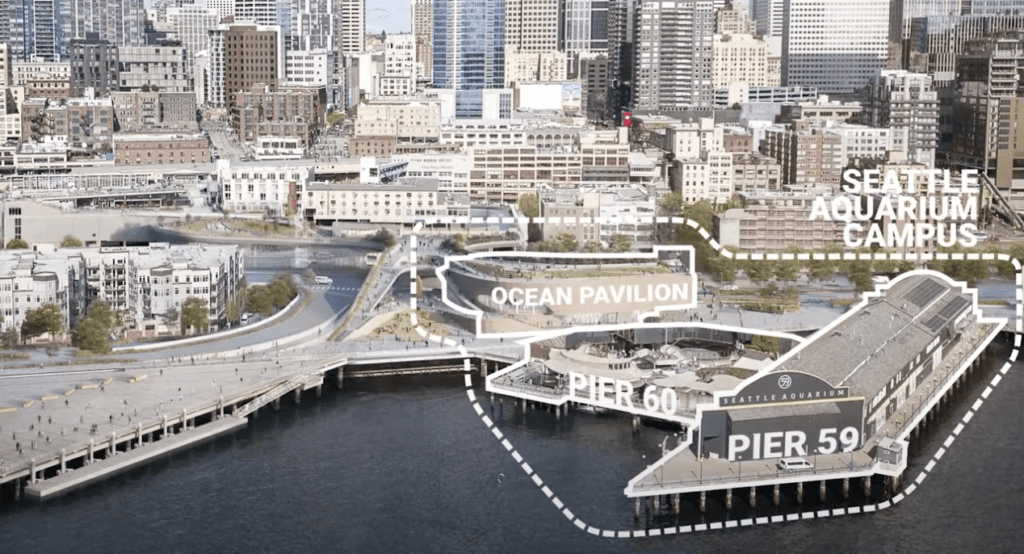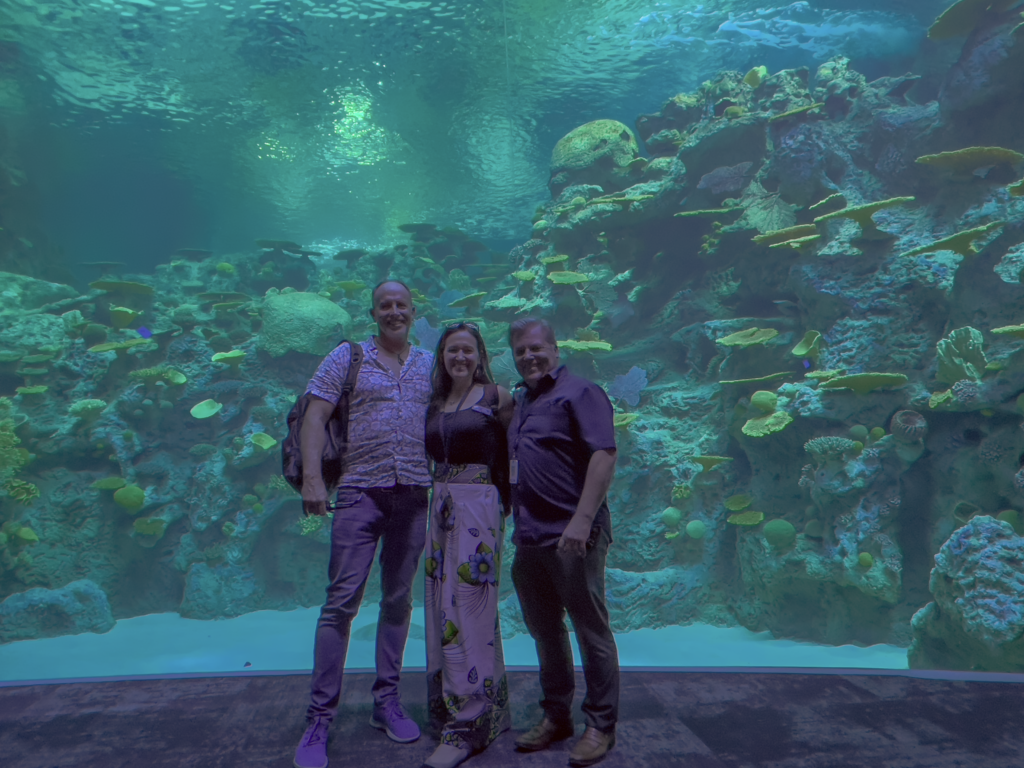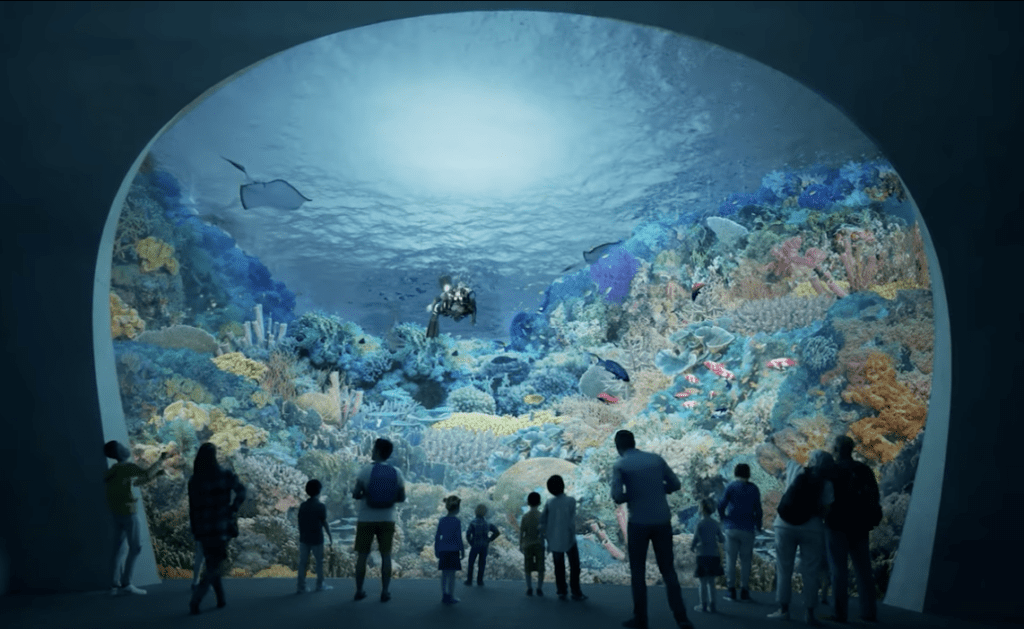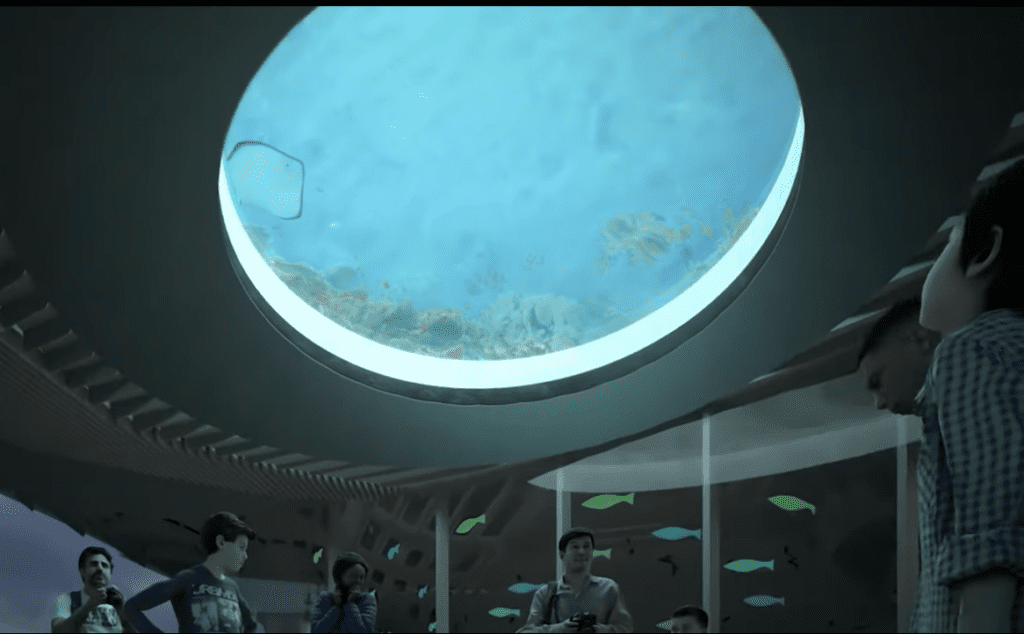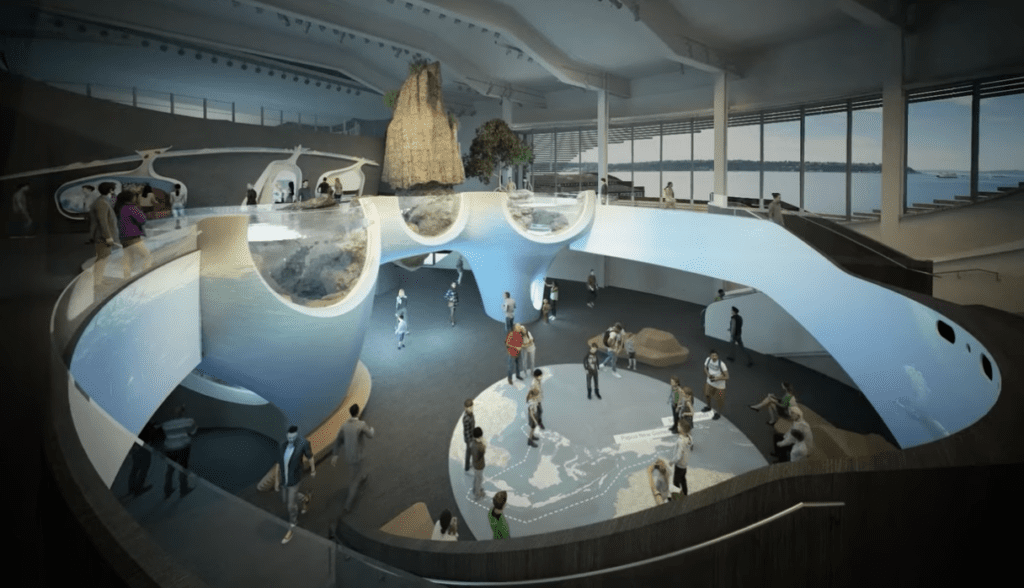A Surprising Visit to Seattle’s Ocean Pavilion as it Nears Completion
Administrator’s note: Why are we posting about the Seattle Aquarium‘s new facility Ocean Pavilion and what does it have to do with the Bird’s Head Seascape on the opposite side of the Pacific? I was surprised…quite a LOT actually.
And I learned WHY on a recent pre-opening visit. I accompanied Dr. Mark Erdmann, a Conservation International VP and its Director of Marine Programs South Pacific, to the facility where Dr. Erin Meyer, Seattle Aquarium’s Chief Conservation Officer and Tim Kuniholm, the Aquarium’s Senior Director of Public Relations and Strategic Partnerships showed us around.
Ocean Pavilion celebrates the Coral Triangle, a roughly triangular region in the tropical Southwestern Pacific that includes parts of Indonesia, Malaysia, the Philippines, Papua New Guinea, the Solomon Islands and Timor-Leste. This expanse of ocean contains at least 500 reef-building species of coral. The area is so biodiverse it is often termed the “Amazon of the Ocean”, others call it the “Bullseye of Marine Biodiversity”.
Ocean Pavilion’s largest exhibit, The Reef offers opportunities to view a thriving coral reef community from above, across and below. Guests will come face to face with over a 100 species of marine life and an incredible 3,500 individual fish, invertebrates/invertebrate colonies and plants, including sharks, rays, schooling fish, seahorses, mangroves. Additionally, there are 30 species of live corals, found in the warm tropical waters of the South Pacific. The Reef visitors will watch schools of brilliantly-colored reef fish, learn about animal care and conservation, and develop a deeper appreciation of the importance of apex reef predators and the coral reef ecosystem.
Even street level passersby will be able to gaze overhead in wonder into the nearly half-million gallon coral canyon teeming with thousands of fish and invertebrates through an oculus, the aquarium’s circular port.
One Ocean Hall journeys to the far reaches of the ocean through 360º video and interactive displays that spotlight marine ecosystems from around the world.
The two-level Archipelago exhibit will allow visitors to experience a shoreline mangrove forest above the surface, with a coral reef below. This exhibit will demonstrate how mangroves protect the shoreline and provide a secure and safe habitat for juvenile fishes.
At Home in the Ocean allows visitors to get up close to species like clownfish, seahorses, leaf scorpionfish; even flamboyant cuttlefish!
Younger guests will love exploring the Coral Reef Encounter, a crawl-through space where they’ll come face-to-face with coral reef inhabitants.
While marveling at cruising sharks and rays, visitors will be introduced to the Indo-Pacific leopard sharks and learn about the world-first rewilding program, named ReShark, an international collective effort to recover threatened sharks and rays around the world. ReShark’s first project, StAR, led by the West Papua Provincial Government and the Research and Innovation Agency of Indonesia, is well underway with two hatching and nursing facilities in Raja Ampat, West Papua, Indonesia. The Seattle Aquarium is one of the principal partners of ReShark.

A Leopard shark pup (juvenile) in one of the Indonesian hatcheries. Note the pup has stripes while the adult has spots. This, sometimes confusingly, leads to these sharks being known by both names. ©Jones/Shimlock-SecretSeaVisions
I received a quite a surprise when Dr. Meyer pointed out another Indonesian-related exhibit, celebrating the “adat” (traditional) Papuan practice of “Sasi”. The “Lokasi Sasisen” exhibit honors the ancient tradition of seasonal closures of certain fisheries to allow their numbers to regenerate. This is the equivalent of what today we term a temporary or seasonal “no take zone”. The natives knew the limits of their resources and had established environmental practices to ensure food security for their descendants long before foreign “intervention”.
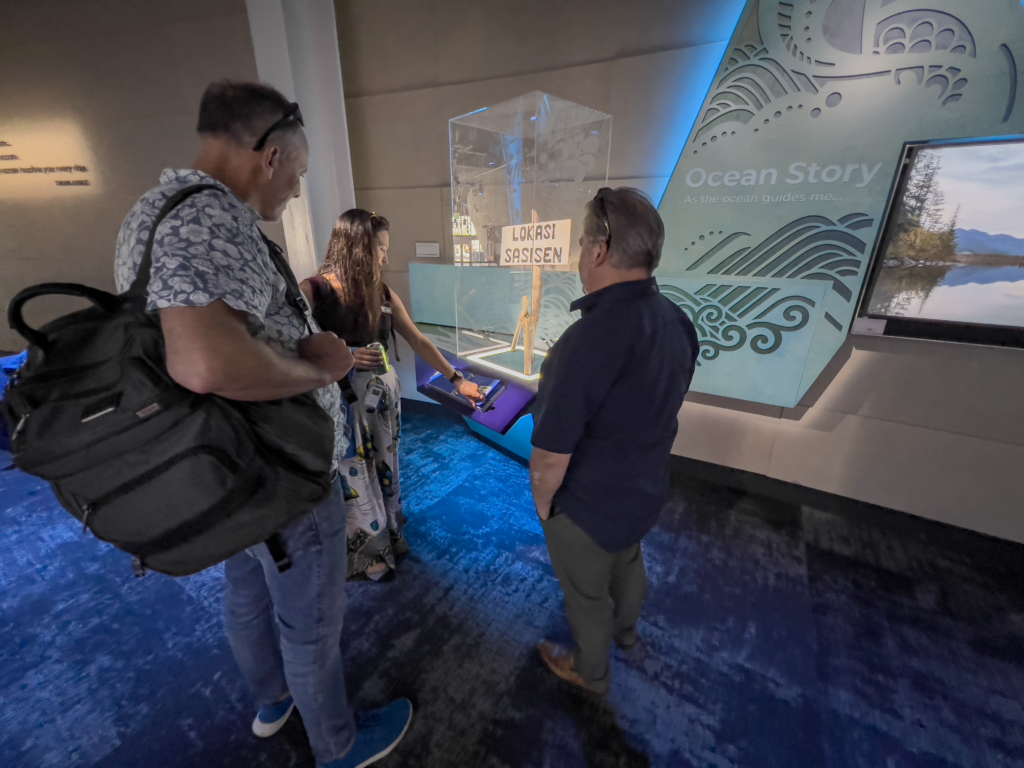
Dr. Meyer points out the “Lokasi Sasisen” or (temporary) “No Take Zone” exhibit, which celebrates the traditional method of resource management in West Papua.
Seattle Aquarium’s Ocean Pavilion will officially open on August 29, 2024. We’ll be visiting…soon, see you there!
You can purchase tickets on the Aquarium’s website, https://www.seattleaquarium.org/explore-the-aquarium/campus/ocean-pavilion/






































